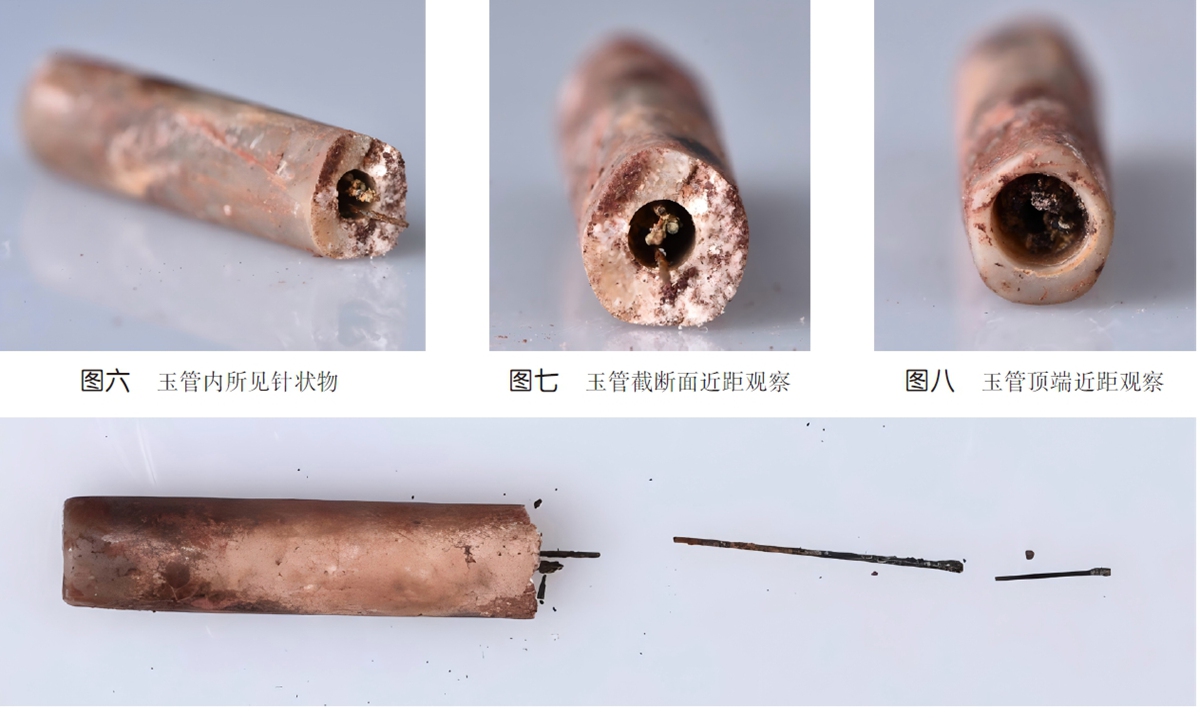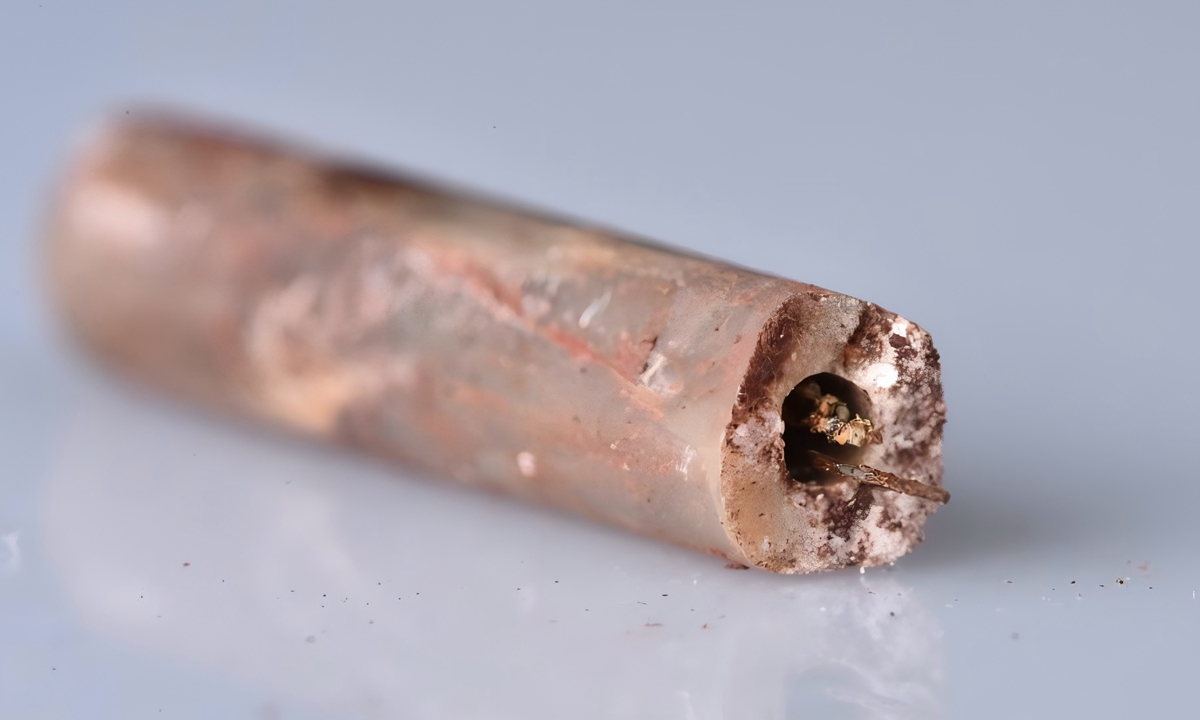
 i_need_contribute
i_need_contribute

Needle fragments found in the broken jade tube section unerathed from the famed tomb of the Marquis of Haihun in East China's Jiangxi Province Photo: Courtesy of Yang Jun
Discovered within a jade tube inside a gilded lacquer box placed near the occupant of the tomb - Liu He, a deposed Western Han Dynasty (206BC-AD25) emperor later known as the Marquis of Haihun - the needles were found fragmented and heavily corroded.

Needle fragments found in the broken jade tube section unerathed from the famed tomb of the Marquis of Haihun in East China's Jiangxi Province Photo: Courtesy of Yang Jun
"At least five needle fragments were visible within the broken jade tube section. Only one could be fully extracted; the others remained embedded inside, with traces of decayed textile attached," Yang Jun, head of the tomb's excavation team, told the Global Times on Thursday.
Researchers, prioritizing artifact preservation, carefully analyzed only fragments that had naturally detached.
Advanced testing revealed they were crafted from steel produced by the "frying" process, a crucial early steelmaking technique, with an exceptionally fine diameter of just 0.3 to 0.5 millimeters comparable to modern acupuncture needles.
Crucially, a wooden label inscribed "Nine Needles Complete" found nearby confirmed the objects' identity.
"This definitively identifies them as one type of the 'Nine Needles' described in ancient medical texts," explained Wang Chuning, a doctoral researcher at Peking University, according to Xinhua News Agency.
The significance of this steel innovation was emphasized by experts.
"Iron needles rust easily, risking infection. Gold or silver needles are too soft and difficult to make this thin," noted Zhou Qi, a research fellow at the China Academy of Chinese Medical Sciences, adding that steel needles enabled more sophisticated techniques and longer retention in the body, representing a major leap from stone or crude metal tools.
"This is the earliest physical evidence of steel medical needles in China," Gu Man, director of the China Academy of Chinese Medical Sciences, told the Global Times.
According to Gu, the discovery proves that advanced "frying" steel technology had already been applied to acupuncture needle production by the Western Han Dynasty at the latest.
"This breakthrough in material science directly fueled the evolution of acupuncture tools and the progress of medical practice itself," Gu said.
The tomb of the Marquis of Haihun, which dates back over 2,000 years, is considered as one of China's most significant archaeological discoveries of the past decade.